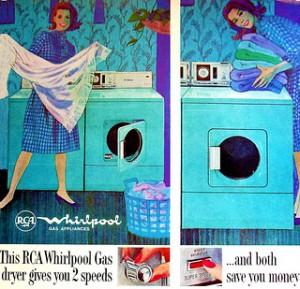 No, not a washer/dryer. A real, honest-to-goodness vortex.
No, not a washer/dryer. A real, honest-to-goodness vortex.
Last week I wrote about what nonprofits can learn about why we stopped building pyramids. The digital revolution has crumbled that baby – today’s ‘donor pyramid’ is nothing but an empty frame. Our donors no longer fit inside of it. So… what’s a nonprofit to do?
My guest post yesterday on Maximize Social Business detailed precisely How Social Media Toppled the Donor Pyramid – and what that means for nonprofits. Nothing is neat, orderly and linear anymore. Supporters are here, there and everywhere – all at once!
Today, electronic communications – social, mobile, email, crowd funding, online donating — have permanently disrupted the traditional donor-engagement process. There are so many different ways for folks to find you and interact with you that it’s dizzying. Back to our new vortex.
Every entry point into the whirlpool offers a pathway to deeper engagement. What complicates things is that you’re no longer in control. You contribute to the energy, but you can’t create or contain it. The circle offers many opportunities for folks to be influenced by forces outside your organization’s control. The only constant is energy, which ebbs and flows.
The best way to work the Donor Vortex is actively. Keep it lively and fun. Keep the energy flowing and building until…. swoop! – your donor is hurled into the vortex. You offer your donors rewards for their engagement. You keep them smiling, and enjoying and feeling good.
Social media makes it possible to provide folks with a continuous ‘surround sound’ experience. They can respond; you can respond back… give it a whirl! The key to understanding how this model differs –essentially – from the pyramid model is thus:
There’s no fixed end point for your donor’s engagement in a vortex.
The vortex model values many different types of contributions. Smart nonprofits have always known to let donors know they’re valued for more than their money. The vortex model makes this happen. Influencers, advocates and ambassadors are highly valued contributors – and sometimes they will influence donations well beyond what they themselves are able to contribute.
The vortex model also means reimagining the concept of “lifetime value.” It’s no longer simply a combination of average gifts, future capacity and attrition rates. Now it must encompass factors like the size of a person’s network and their propensity to use that network. In other words, the “Connectors” and “Mavens” and “Salesmen”of whom Malcolm Gladwell wrote in The Tipping Point become very desirable constituents.
Get some new goals — vortex-related ones; not pyramid climbing ones.
Like everything else, if you want folks to connect, persuade and sell for you you’ve got to ask them. Then you must measure to see if these desired actions are being achieved. See my article here to learn what you can do to boost the impact your supporters feel – and offer – when it comes to your cause.
The other way to think about this is as a donor engagement journey. Donors will still travel a path from awareness… to interest… to engagement… to investment. So don’t stop trying to move them along this continuum. The difference is that the continuum is no longer linear or static, it’s circular and dynamic. To be truly effective at this means putting it on everyone’s plate; then hiring a manager to coordinate your efforts.
Pyramid vs. embracing whirlpool.
We love whirlpools (we even pay extra for them in hotel rooms). They’re soothing. You can luxuriate in them. Much better than mountain (aka pyramid) climbing.
Of course, you can stuff donors into whatever model you’ve a mind to. If you want to stack folks up according to how big their gifts are TODAY, you can do that. But… where does that get you? For most nonprofits, it leads to a culture of building relationships only with the folks at the top. A lot of potential is missed. It’s always been thus, but the digital revolution has shined a beacon on this because it’s so much more evident who our influencers are. We didn’t know when our $25 donor was telling 100 of her friends to give to us. So we didn’t lavish any attention on her. Today, we can see via Twitter, Linkedin, Facebook, G+, YouTube shares, Yelp reviews and comments on our blogs who our real fans are.
The pyramid model doesn’t do today’s digitally enabled constituents justice.
What do you think? Pyramid fan still? Whirlpool? Vortex? Funnel? Ladder? Lava lamp? Let us know what works!
If this intrigues you, check out 7 Clairification Keys to Unlock Your Fundraising Potential. It provides exercises to help you clairify your constituent engagement model, including how you can use a vortex to create lots of positive energy. Plus there’s more on clairifying your values, stories, social channels, support constituencies, resources and systems. Check it out here.
Note: This post was inspired by the brilliant work of Julie Dixon & Denise Keyes who wrote an article in Stanford Social Media Innovation Review that nicely sums up the benefits of the vortex model. I encourage you to read it.
Photo: Flickr, 1950s Unlimited





Claire – I love that you’ve articulated this common problem as a “whirlpool” and pointed to the fact that you have to be willing to actively work in it. I would also add that consistency is important. So often with things like social media or other cultivation tools, non-profits expect instantaneous result and end up abandoning ship too soon.
Yes, it is hard work but as you point out it is a level playing field that allows non-profits and donors alike to communicate openly and equally. Hopefully more organizations will begin to take advantage of this wonderful opportunity!
Thanks for this comment Vanessa. Yes, while you can’t always control the energy of the whirlpool/vortex, neither are you at its mercy. Consistency — and practice — can help you quite a bit.